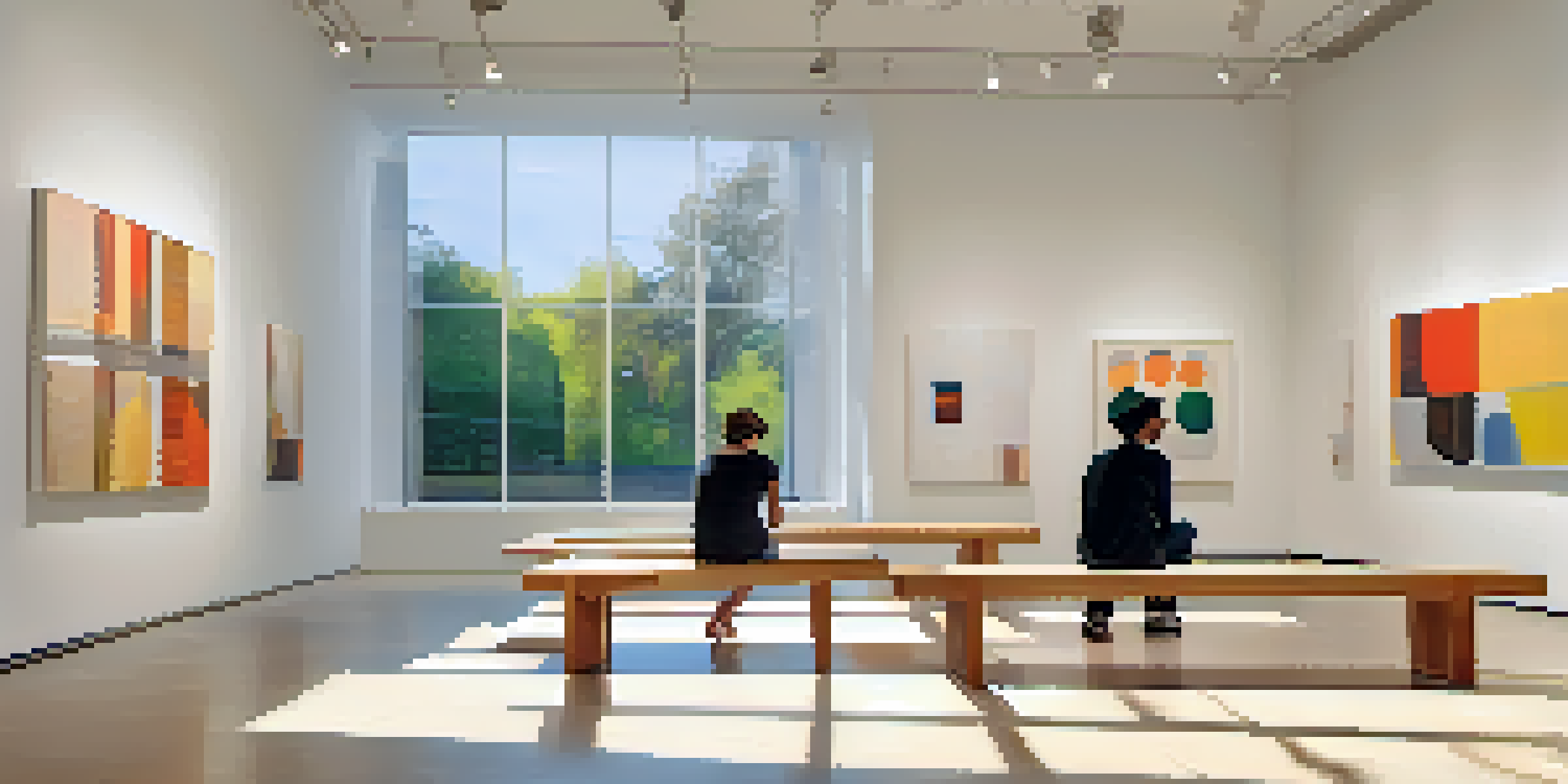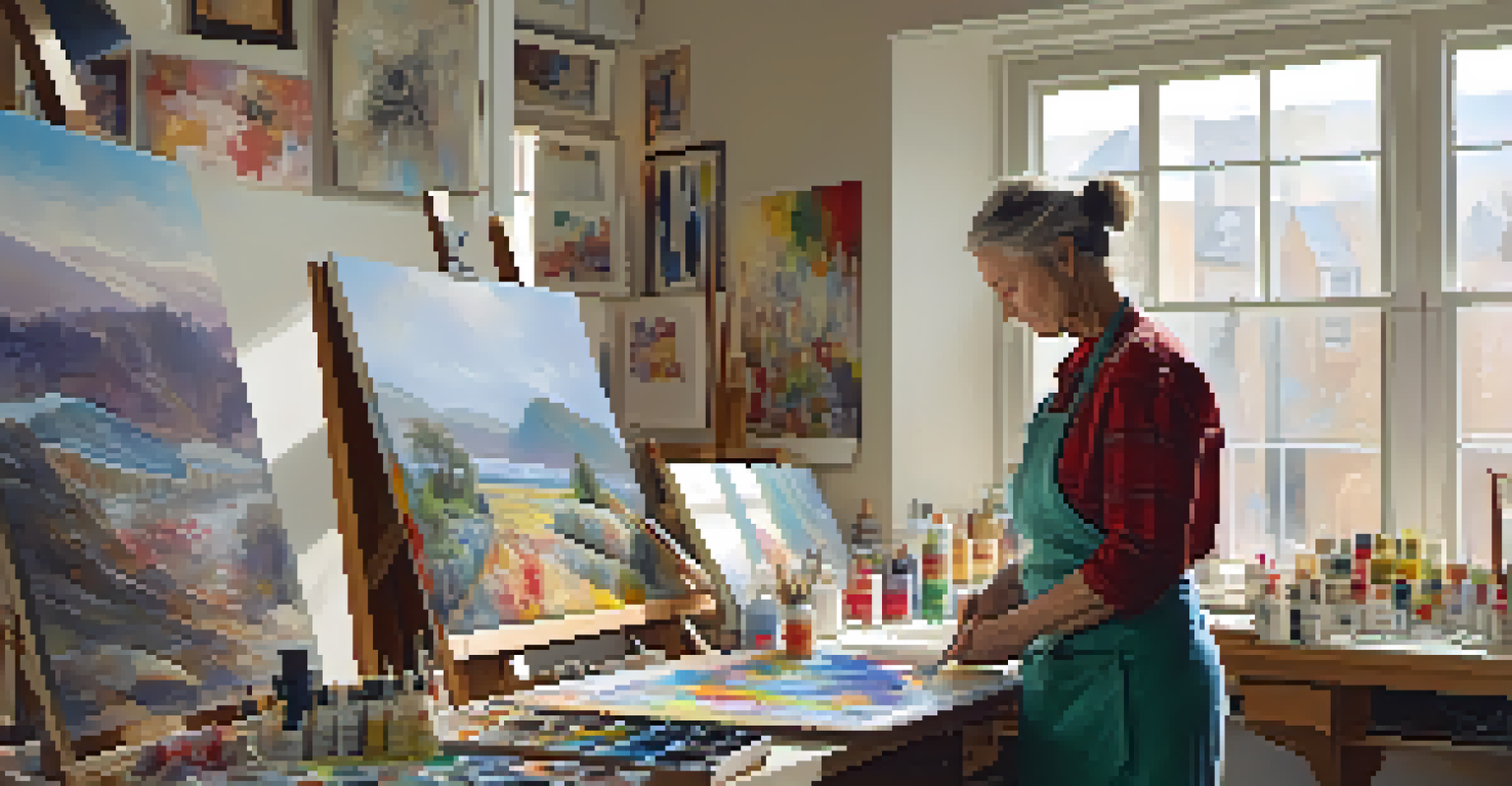The Influence of Art Critics on Paintings and Their Reception

Understanding the Role of Art Critics in the Art World
Art critics play a pivotal role in the art world, acting as intermediaries between the artist and the public. Their analyses and interpretations can significantly influence how a painting is perceived. For example, a critic's glowing review can elevate an artist's status, while a negative critique might overshadow their work.
Criticism is something we can avoid easily by saying nothing, doing nothing, and being nothing.
Critics not only evaluate the aesthetic qualities of a piece but also delve into its cultural and historical context. This deeper exploration often helps viewers connect with the artwork on a more profound level. By framing a painting within a larger narrative, critics can spark interest and discussion among the audience.
Moreover, the opinions of critics can shape trends and movements in the art community. When critics champion particular styles or themes, they can lead collectors and galleries to prioritize those works, ultimately influencing which artists gain recognition and support.
The Power of Positive Critique: A Case Study
A prime example of positive critique influencing an artist's reception is the case of Jean-Michel Basquiat. When critics began to recognize his work in the late 1970s, it quickly garnered attention for its raw energy and social commentary. The favorable reviews helped Basquiat transition from street art to gallery exhibitions, solidifying his place in art history.

This shift illustrates how critics can elevate an artist's profile and bring their work to a broader audience. Positive critiques not only validate an artist's efforts but also encourage collectors to invest in their pieces. In Basquiat's case, critics highlighted the importance of his voice, which resonated powerfully with the zeitgeist of the time.
Critics Shape Artists' Reception
Art critics significantly influence how an artist's work is perceived, affecting their reputation and market value.
The impact of such endorsements is profound, as they can create a ripple effect, inspiring new artists and influencing public taste. As more people became aware of Basquiat's work through critical acclaim, his paintings' value soared, demonstrating the tangible results of a favorable critique.
The Double-Edged Sword of Negative Critiques
While positive critiques can launch an artist's career, negative critiques can have the opposite effect. A harsh review can tarnish public perception and deter potential buyers. For example, when a prominent critic dismisses a painting as derivative or uninspired, it can lead to a significant decline in interest and sales.
An artist is not a special kind of person; rather, each person is a special kind of artist.
Artists often face a tough battle to regain their reputation after a negative critique. The psychological impact can be daunting, leading to self-doubt and frustration. This is especially true for emerging artists who rely on early feedback to navigate their creative path.
However, negative critiques can also serve as a catalyst for growth. Some artists use criticism as motivation to refine their work or explore new directions. Thus, while a negative critique can sting, it can also provide valuable insights that help artists evolve and improve.
The Relationship Between Critics and Artists
The dynamic between critics and artists is complex and can vary widely. Some artists view critics as essential collaborators, while others see them as adversaries. This relationship can influence how artists approach their work and engage with the public.
For instance, an artist who values critical feedback may actively seek out reviews and incorporate suggestions into future pieces. Conversely, an artist who feels misunderstood may choose to distance themselves from critics, focusing solely on their vision. This tension can shape the evolution of both the artist's style and the critic's perspective.
Negative Reviews Can Drive Growth
While harsh critiques can damage an artist's public image, they can also motivate artists to refine and improve their work.
Ultimately, the relationship is a dance of mutual influence. Critics help shape the narrative around an artist's work, while artists challenge critics to expand their interpretations. This interplay enriches the art community and fosters deeper conversations about creativity and expression.
The Impact of Social Media on Art Criticism
With the rise of social media, the landscape of art criticism has evolved dramatically. Platforms like Instagram and Twitter allow for immediate feedback and engagement, with both critics and the public sharing their thoughts on artworks in real time. This democratization of art commentary has shifted the power dynamics previously held by traditional critics.
While social media provides a platform for diverse voices, it also raises questions about the quality of critique. Not all opinions carry the same weight, and the rapid pace of online discourse can sometimes lead to superficial assessments. However, the ability for artists to interact directly with their audience can foster a more personal connection and immediate understanding of their work.
Moreover, social media can amplify the reach of both positive and negative critiques. A single tweet or post can go viral, impacting an artist's reputation exponentially. As a result, artists must navigate this new terrain carefully, balancing their engagement with the audience while remaining true to their artistic vision.
The Role of Galleries and Exhibitions in Reception
Galleries and exhibitions play a critical role in how paintings are received by the public and critics alike. The setting in which a piece is displayed can significantly influence its interpretation. For example, a minimalist gallery can enhance the focus on the artwork, while an overly cluttered space might distract from it.
Additionally, the curation of exhibitions often reflects the opinions and tastes of the critics involved. When a gallery showcases a particular artist or movement, it can shape public perception and drive interest. Critics often attend these exhibitions, and their reviews can determine the success or failure of the showcased works.
Social Media Transforms Criticism
The rise of social media has democratized art criticism, allowing immediate feedback but also raising concerns about the depth of analysis.
Moreover, galleries can create narratives around the artwork that critics and audiences may adopt. By framing an exhibition with specific themes or concepts, galleries influence how viewers engage with the art. This collaborative effort between galleries, critics, and artists ultimately shapes the broader art discourse.
Art Critics and the Evolution of Artistic Movements
Art critics have historically played a significant role in the evolution of artistic movements. By championing certain styles or philosophies, critics can help define and promote new trends. For instance, the Impressionist movement gained traction largely due to the support of influential critics who recognized its importance and encouraged public appreciation.
Critics help contextualize movements within the broader art historical narrative, making connections that may not be immediately apparent to the public. This contextualization can elevate lesser-known artists and styles, ensuring that they receive the recognition they deserve. As critics write about emerging trends, they often shape the trajectory of these movements.

Furthermore, critics can act as gatekeepers, deciding which movements or artists gain visibility. Their endorsements can lead to exhibitions and increased sales, while their dismissals can silence innovative voices. This power highlights the importance of thoughtful and informed criticism in fostering a vibrant and diverse art scene.